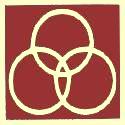Organizational Learning
Learn from managing problems to succeed
from Dr. Kenneth D. Mackenzie's The Practitioner's Guide to Organizing Organizations

Visible Problems
Serious organizational learning problems are usually rooted in a failure of ideas...
- Trying to run an organization undergoing rapid change as a bureaucracy
- Reliance on top–down decision–making and ineffective
organizational communication
- Overuse of organizational politics to "solve" problems
- Antiquated organizational rewards systems
- Poor planning
- Avoiding making decisions
- Separation of human resources management from the
direction of the organization
- Management by the numbers
- Poor quality of product or service and of management
processes
- "Cookie–cutter" formulas for downsizing to decrease costs
- Jumping on "flavor of the month" management fads
- Failure to employ available in–house resources to solve
problems
... or a failure of ethics...
- persistent decisions which are "smart" but unprincipled - leaving a wake of legal and administrative problems
- short-sighted greed where one group of stakeholders attempts to increase its value at the expense of other stakeholders
Concept of a Process in Organizational Learning
A process is a time dependent sequence of elements with 5 components:
- The persons, group or other entities performing the processes
- The elements used to describe the steps in the process
- The relationship between every pair of these elements
- The links to other processes, and
- The resources and their characteristics–in–use involved with the execution of the elements
Common organizational learning problems from misapplying this process are
- Leaving out the people (component 1) as is done in Business Process Reengineering
- Leaving out the links between the process under scrutiny and other processes with which it is interdependent (component 4). This always creates unpleasant surprises
- Ignoring the task resources and their characteristics–in–use that must be deployed in the performance of a process (component 5). This hurts implementation
Since the work of an organization is made of its many interdependent processes and high quality is the result of reliable execution of the processes, understanding processes is key to organizational problem solving.
Concept of a Structure
Group structure is the pattern of interaction between members in a group.Structures are not stable and rigid, like they are portrayed in organization charts, and the authority relationships implied by org charts are only one of many structures in a group.
Dr. Mackenzie's research shows us several things about group structures:
- Structures represent a need–satisfying pattern of
interactions
- Structures will change as needs change
- People will bypass formal structures when they are not need–satisfying
- Groups and organizations have many structures
- Not all of these structures change at the same rate
- Structural change is normal and the processes of structural change obey relatively simple rules
- The processes of structural change are stable
- Structures and processes are highly interdependent
- Structures are not a cause of behavior, they are the result of behavior
Bottom line is that processes and structures are intertwined and failure to appreciate the interdependence is itself a source of organizational problems.
Organizational Learning Disabilities
This could be subtitled something like "what makes smart people do dumb things..."
Perhaps the best way to summarize this concept is to share Dr. Mackenzie's Recipe for An Organizational Disaster.
- Start with an incomplete concept of the organizational problem solving process
- Employ a derivative and, hence, defective concept of process (leave out the people doing the work, the task resources and their characteristics–in–use, and ignore links to other processes)
- Define the process so that it is, for purposes of accountability and control, disconnected from those who must perform and manage it
- Define performance standards based on perfect performance of the process
- Develop and implement an information system to monitor performance
- Create a single loop control process to ensure compliance to the standard (no evolution of the performance standards to meet changing conditions)
- Reduce organizational slack to the minimum consistent with the standard (cut out as many people as possible)
- Proliferate Steps 3–7 for all known technological processes
- Mix in changes
- Simmer slowly. The organizational bomb is guaranteed to explode
 Family Business Experts Understands
Family Business Experts Understands
Family Values andBusiness Systems
Return from Organizational Learning to
Change Management Theories
SHARE THIS PAGE WITH FAMILY, FRIENDS & BUSINESS ASSOCIATES!
Would you prefer to share this page with others by linking to it? - Click on the HTML link code below.
- Copy and paste it, adding a note of your own, into your blog, a Web page, forums, a blog comment, your Facebook account, or anywhere that someone would find this page valuable.
|




